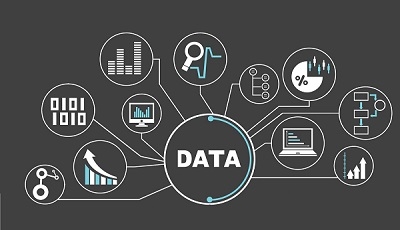Open data, big data and open government: six subtypes of data
Fecha del post: 21-02-2017
Fuente: http://www.opendatanow.com/2013/11/new-big-data-vs-open-data-mapping-it-out/#.WKwewPnhDIU

What do open data and big data have in common? At what point do the open data and open government movements converge? In order to answer these theoretical questions, it would first be necessary to understand each of the three concepts independently. In this regard, big data can be defined as large datasets that can not be treated in a conventional way, since they exceed the capabilities of the usual technological tools for their collection, management and processing.
As regards open data, according to the International Open Data Charter, open data is the digital data that is made available with the technical and legal characteristics necessary for it to be freely used, reused, and redistributed by anyone, anytime, anywhere. Finally, in order to understand this trinomial, these two definitions must be added to the collaborative philosophy that advocates inclusion and citizen participation in governmental processes, called open government.

The interrelation of open data, big data and open government has given rise to six different subtypes of data with common features from each of the three categories, as shown in the above chart, but also with different characterisitics:
- Big data but not open data. A large amount of big data belongs to this category, most of which have a significant commercial value. Their treatment and re-use is really useful both for the public and private sectors since, thanks to them, commercial patterns, demographic tendencies or epidemiological outbreaks can be predicted.
- Open Government, but not open data. The open government movement advocates for citizen participation in the local, regional or national government decisions. However, this does not always include open data policies and sometimes publishing open data is not its main purpose.
- Big and open data, but not open government. Nowadays, there is a large amount of data that does not belong to public bodies, but it comes from academic, business or private sources, with an open and reusable approach. The publication of scientific research results such as the Zooniverse searcher or the re-use of social data, such as in the case of Weanalyze, are just some examples of big and open, but not public, dat
- Government data but not big data. Government data do not have to be massive to be valuable. Publication of a modest amount of public information, such as public transport schedules, can have a positive impact on society through the development of new value added products or services.
- Open and private data. This category includes those private data that companies choose to share for their own purposes, for example to satisfy potential investors or to enhance their corporate reputation. Hackthons organized by financial institutions are a good example of this category.
- Open data, big data and open government. The perfect trinomial. The openness of these datasets can have a great socioeconomic impact on their environment. In fact, according to statistics from the European Data Portal, the re-use of open data could save 7,000 lives a year or save up to 629 billion hours on the roads.
This diagram is only one of the possible representations of the data ecosystem, a dynamic scenario that is constantly evolving as information technology moves on and governments invest more resources in the data collecion and openness: a sector that, only in the European Union, translates into a market size valued at 75.7 billion euros and 1.7 billion savings in public spending by 2020.










